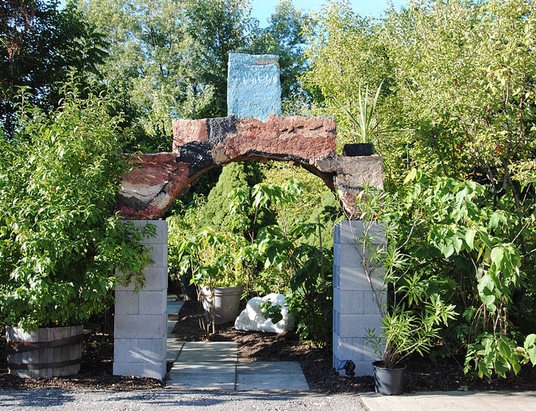Sat 11/11 & Sun 11/12 @ 10AM-4PM
It’s harvesting time at Cleveland’s Morgan Art of Papermaking Conservatory, which boasts the country’s largest kozo grove. The East 47th Street arts center, which is dedicated to every facet of paper making, book arts and letterpress printing, is a working studio, gallery, gathering place and educational hub producing some of the world’s finest handmade papers.
Part of the venue’s operation includes growing the raw material (kozo) onsite, which not only avoids the expense of importing fibers from Asia, but also creates a self-sustaining cycle of papermaking. To serve that cause, the Morgan Art of Papermaking Conservatory annually schedules its Kozo Festival, which acts as a community-wide event providing a hands-on introduction to the foundation of papermaking. This year’s event is scheduled for Sat 11/11 and Sun 11/12 @ 10am-4pm.
CoolCleveland talked to the Morgan Art of Papermaking Conservatory Artistic Director Tom Balbo.
CoolCleveland: What exactly is the Kozo Festival?
Tom Balbo: It’s a deciduous crop, so we have a harvest every year. You want the harvest to start after the first frost. That’s not always possible in the climate anymore. Basically, you want no more than a two-inch think sapling coming up from the ground. We cut it down to four or six inches above the ground at an angle. That’s our stock. We then steam all of those saplings for about three hours. We usually use a wood-fired stove outside if the weather permits. And with that, what happens is the outer and inner bark slightly shrink away from the main stalk of the tree. Then you’re able to peel that off. It gives you the start for what you need in making a fine paper.
CC: How many kozo trees are you harvesting?
TB: We have about 150 trees planted in the back half-acre section behind the Morgan. We have a wide range of sizes, anywhere from a half-inch in diameter to three-inch diameter. If you ever cut a mulberry tree, it’s the same genus. They’re really hardy, and they come back, but you don’t want it to be old wood like a big tree trunk because with that the bark is way too harsh and hard.
CC: How does the Kozo Festival fit into the Morgan Art of Papermaking Conservatory mission?
TB: We are dedicated to the craft of hand papermaking. It’s one of our missions and that involves both eastern and western papermaking. This is an eastern style. We’ll also use milkweed paper in the garden, but these are about the only two fibers we can grow with the amount of the land we have to process it for making paper. So it’s taking it from really the root and tree to stripping it, cooking it and making a very fine sheet of paper.
CC: Can you explain the difference between eastern and western style?
TB: The eastern-style paper, the fibers are usually of a vast nature rather than a cotton. It’s a longer fiber, has a different kind of strength to it, a translucency to it. The eastern style is a non-fixed screen and the western style is what you call a deco and a fixed screen. The process is different in forming. In layman’s terms, basically western style is like the paper you get from invitations. Those are done with a shorter fiber like cotton or flax or hemp, whereas as Japanese screens and calligraphy a lot of that is done on an eastern paper.
CC: So how exactly hard is it to make your own paper?
TB: It’s not so much it’s hard, it’s a lot of patience and time and effort to be able to make a really fine sheet basically from the ground up. It takes that kind of consideration to craft.
CC: What is kozo?
TB: It’s of the mulberry family. It’s probably the most common of varieties of trees. It grows anywhere from North Korea to Japan and down to Thailand. Each variety has a little bit different characteristic.
CC: Finally, what type of people volunteer for the Kozo Harvest?
TB: We’ve had all kinds of people from both the book arts and the artist community to people who are involved with the monarch butterfly. They see us do milkweed, which we harvest as well. It’s a similar type thing that makes a paper. We’ve had people come from the museums. It’s just people interested in making paper from plant fiber. It’s much more sustainable without the chemicals it takes to make a wood pulp like your paper mills make.

